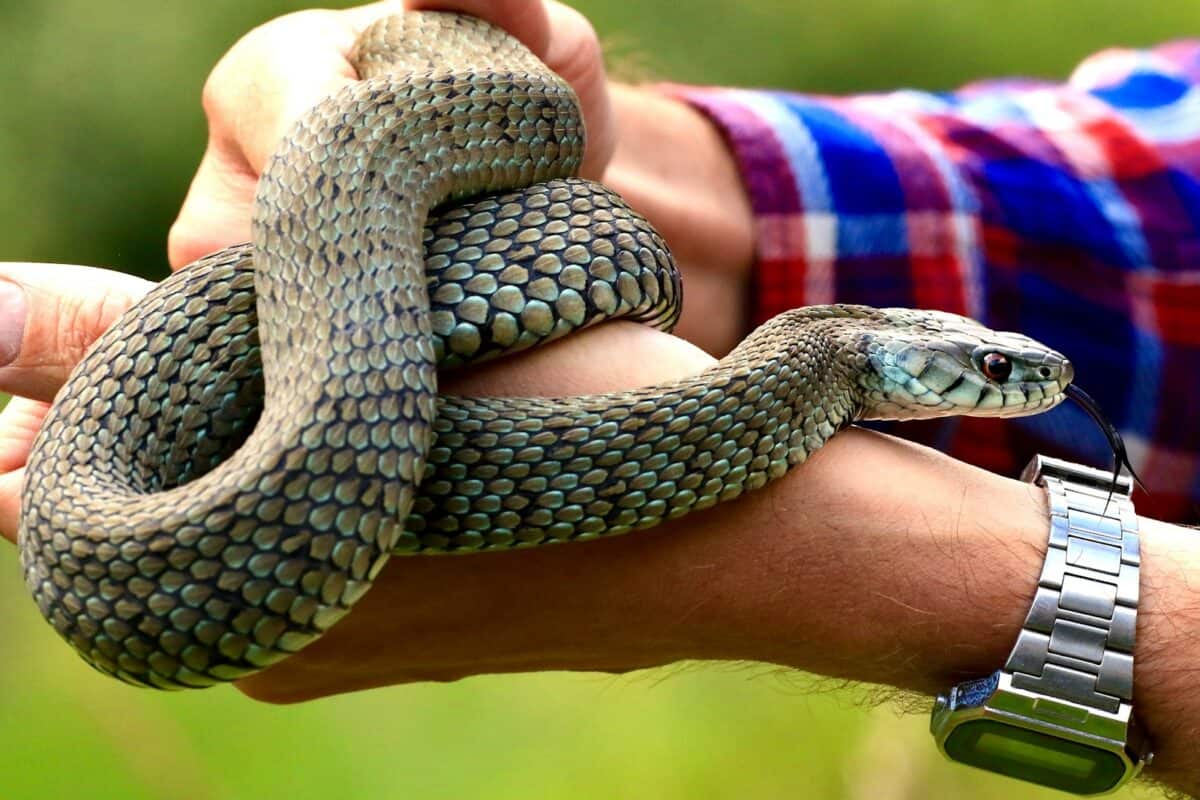The world of pet reptiles has expanded dramatically in recent years, with snakes becoming increasingly popular companions in homes across the globe. Yet, a persistent question remains among both potential and current snake owners: can these seemingly inscrutable reptiles actually be trained? Unlike dogs or cats, snakes don’t respond to traditional training methods, leading many to believe these animals are purely instinctual with no capacity for learning. However, herpetologists and experienced snake keepers have discovered that snake cognition and behavior modification are indeed possible—though perhaps not in the ways you might expect.
This comprehensive guide explores the fascinating realm of snake training, drawing on expert knowledge and scientific research to provide a clear understanding of what’s possible when working with these remarkable reptiles. From basic handling techniques to specialized behavioral conditioning, we’ll examine the truth behind snake intelligence and the realistic expectations you should have when attempting to “train” your serpentine companion.
Understanding Snake Intelligence

Snakes possess a different kind of intelligence than mammals like dogs or cats. Their brains are primarily focused on survival functions rather than complex social learning. Dr. David Penning, a herpetologist specializing in snake behavior, explains: “Snakes have relatively simple but highly specialized brains that excel at processing sensory information relevant to hunting, avoiding predators, and reproducing. While they lack the prefrontal cortex development seen in mammals, they demonstrate remarkable abilities to learn and adapt to their environments.”
Research has shown that snakes can form basic associations between stimuli and outcomes, recognize familiar scents, and even display rudimentary problem-solving abilities when navigating their habitats. Their cognitive abilities are better described as specialized rather than limited. Studies conducted at the University of Tennessee found that corn snakes could learn to navigate simple mazes more efficiently over repeated trials, suggesting they can form spatial memories and learn from experience. This foundation of basic learning ability is what makes certain types of training possible.
What “Training” Means for Snakes
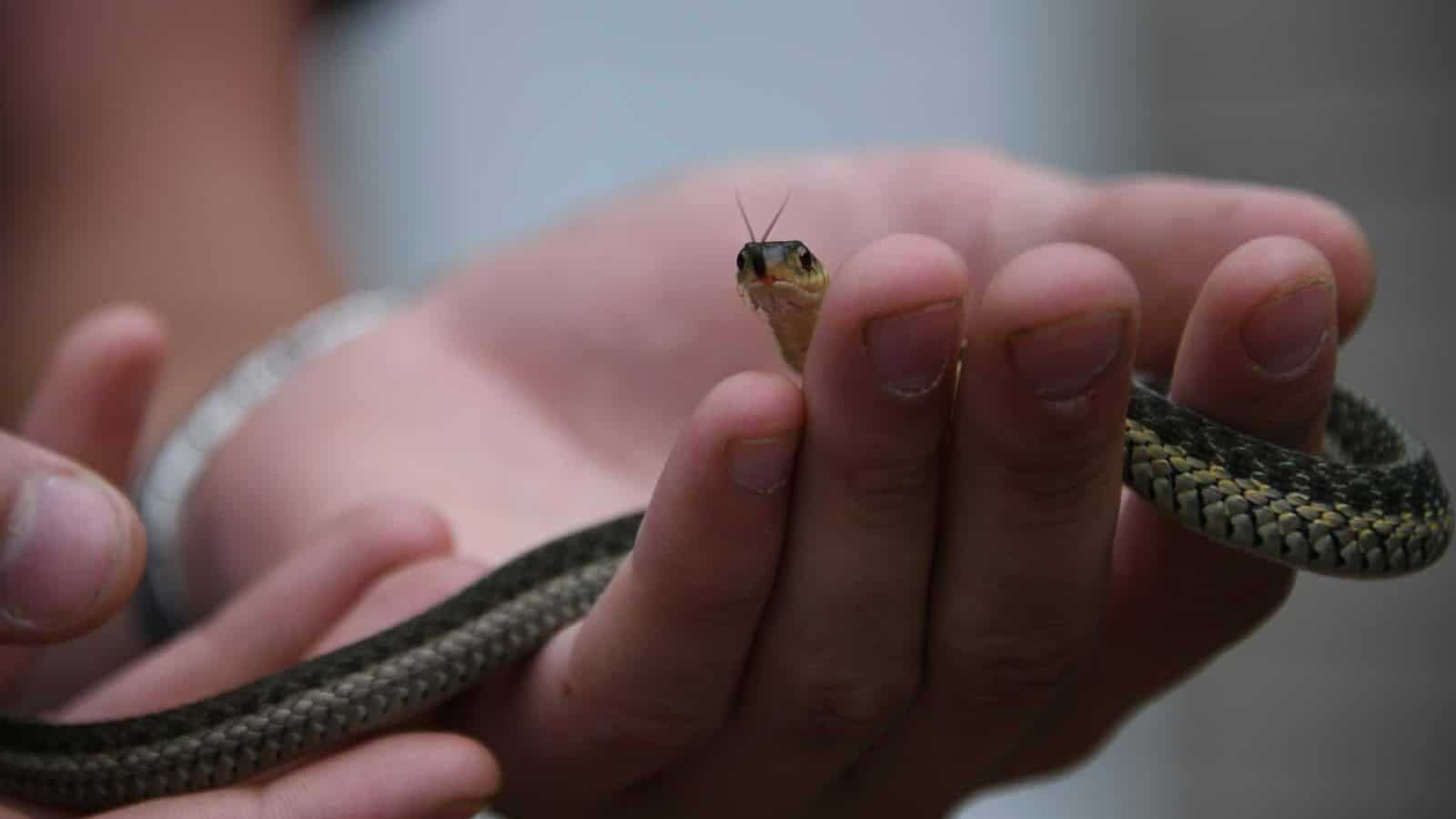
When we discuss training snakes, we’re not talking about teaching them tricks or commands as you would with a dog. Snake training primarily revolves around habituation, desensitization, and creating positive associations. Emily Taylor, Ph.D., Director of the Physiological Ecology of Reptiles Laboratory, clarifies: “Snake training is about modifying their natural behaviors in ways that make them more manageable and less stressed in captivity. It’s about working with their instincts rather than against them.”
Successful snake training focuses on teaching them to tolerate handling, recognize feeding routines, and respond predictably to certain stimuli. Through consistent interaction and positive reinforcement techniques, many snake species can become accustomed to human presence and handling. The goal is to reduce defensive behaviors like striking, musking, or constricting when handled, while promoting calm, relaxed behaviors that indicate the snake is comfortable in its environment and with its human caretakers.
Species Differences in Trainability

Not all snake species demonstrate the same capacity for behavioral modification. Generally, colubrids like corn snakes, king snakes, and milk snakes show greater adaptability to handling and environmental changes. Ball pythons are renowned for their docile temperaments and relative ease of habituation. On the other hand, more primitive species like boas and particularly large pythons may retain stronger instinctual behaviors despite training efforts.
Venomous species present special challenges and limitations for training due to safety concerns, though professional handlers working with these snakes in zoological settings do employ specialized habituation techniques. According to Kevin Torregrosa, Curator of Herpetology at the Staten Island Zoo: “We’ve observed significant differences between species. While a corn snake might become completely comfortable with handling within weeks, some species like green tree pythons may always retain some level of defensiveness despite years of careful handling.” Individual temperament also plays a crucial role, with some snakes naturally being more amenable to handling regardless of species.
Handling Habituation: The Foundation of Snake Training
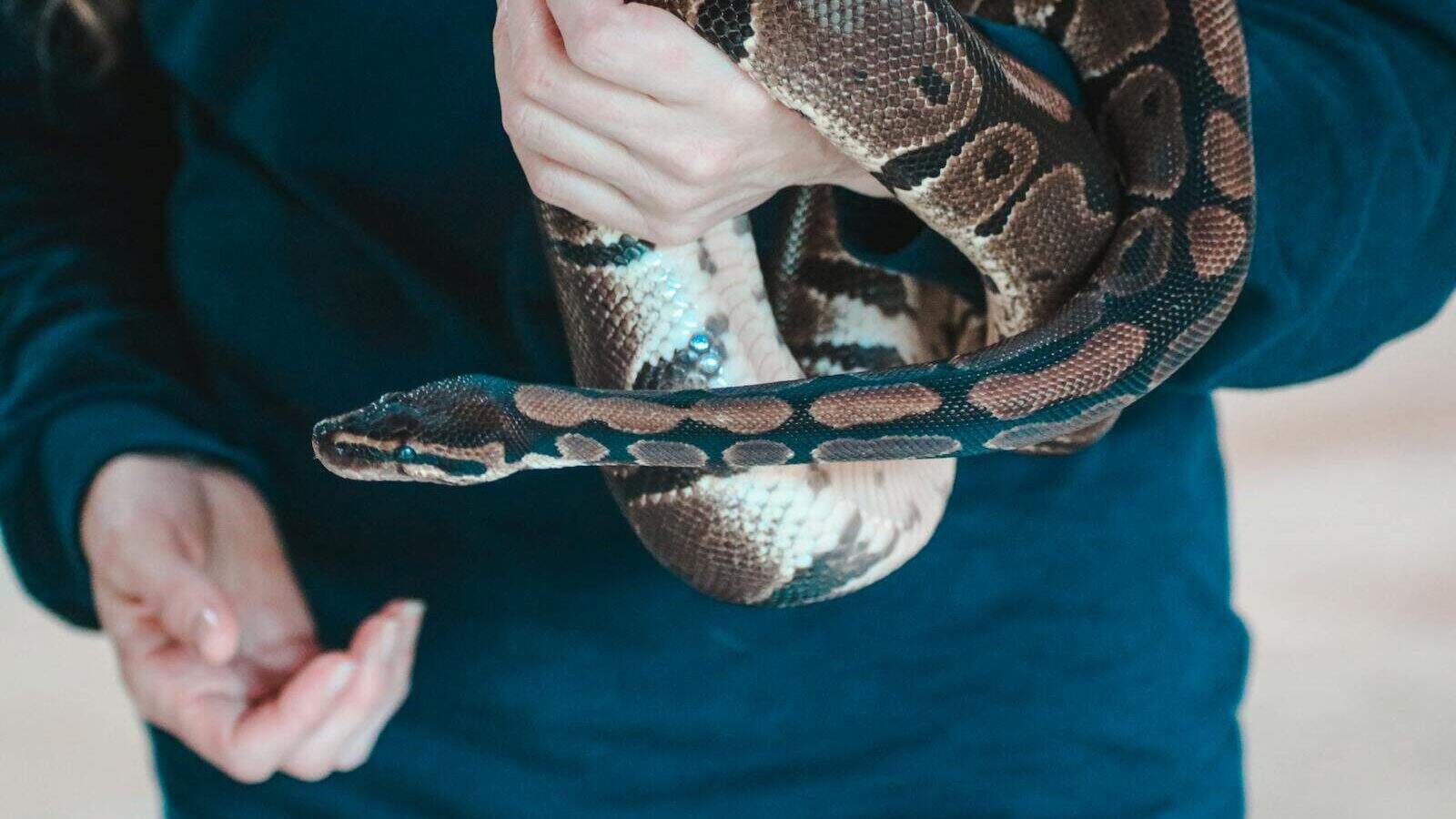
The most fundamental form of snake training involves habituation to handling, a process that builds trust between snake and keeper. Experts recommend starting with brief, gentle handling sessions of just 5-10 minutes several times per week. The key is consistency and respect for the snake’s body language. When a snake shows signs of stress—rapid breathing, tense muscles, defensive posturing—the session should end immediately. Over time, most captive-bred snakes will learn that handling doesn’t represent a threat.
Dr. Melissa Kaplan, herpetologist and author, emphasizes the importance of proper technique: “Always support a snake’s body properly, avoiding sudden movements or restraining pressure. Begin handling sessions when the snake is naturally active, not during shedding cycles or immediately after feeding.” This gradual approach allows the snake to form positive associations with handling. Many snake owners report that after consistent handling over months, their snakes will voluntarily climb onto their hands or arms when the enclosure is opened—a behavior that indicates successful habituation.
Target Training and Movement Control

Some advanced keepers have successfully implemented target training with certain snake species. This technique involves teaching the snake to follow or touch a specific object (the target) in exchange for a reward, typically food. Renowned reptile behaviorist Lori Torrini has pioneered methods using clicker training principles adapted for reptiles. “Snakes can learn to associate the target with positive outcomes,” Torrini explains. “I’ve trained snakes to move from one container to another by following a target stick, which reduces stress during necessary handling events like cage cleaning.”
This type of training utilizes classical conditioning principles similar to those used with other animals but adapted to snake psychology and feeding responses. The process begins by presenting the target immediately before offering food, creating an association between the target and the reward. Over time, many snakes learn to follow the target in anticipation of feeding. While not all individuals respond equally well to this training, success rates are particularly high among active foraging species like king snakes and rat snakes, which naturally track prey over distances.
Feeding Response Modification

One of the most practical applications of snake training involves modifying feeding responses. Wild snakes associate movement with potential prey, which can lead captive snakes to strike at moving hands during routine care. Through careful conditioning, snakes can learn to distinguish between feeding time and handling time. The key is establishing consistent feeding rituals that clearly signal to the snake when food is forthcoming.
Many experts recommend using feeding tools like tongs rather than hands to present prey, and some advocate feeding in a separate container from the snake’s regular enclosure. Dr. Robert Mendyk, Curator of Herpetology at the Bronx Zoo, notes: “By creating clear contextual differences between feeding and handling sessions, snakes can learn to associate specific cues with feeding. This significantly reduces the likelihood of bite incidents from feeding response confusion.” Data shows that consistent feeding protocols dramatically reduce mistaken feeding strikes in captive snakes, with some collections reporting near-elimination of such incidents after implementing structured feeding routines.
Overcoming Defensive Behaviors
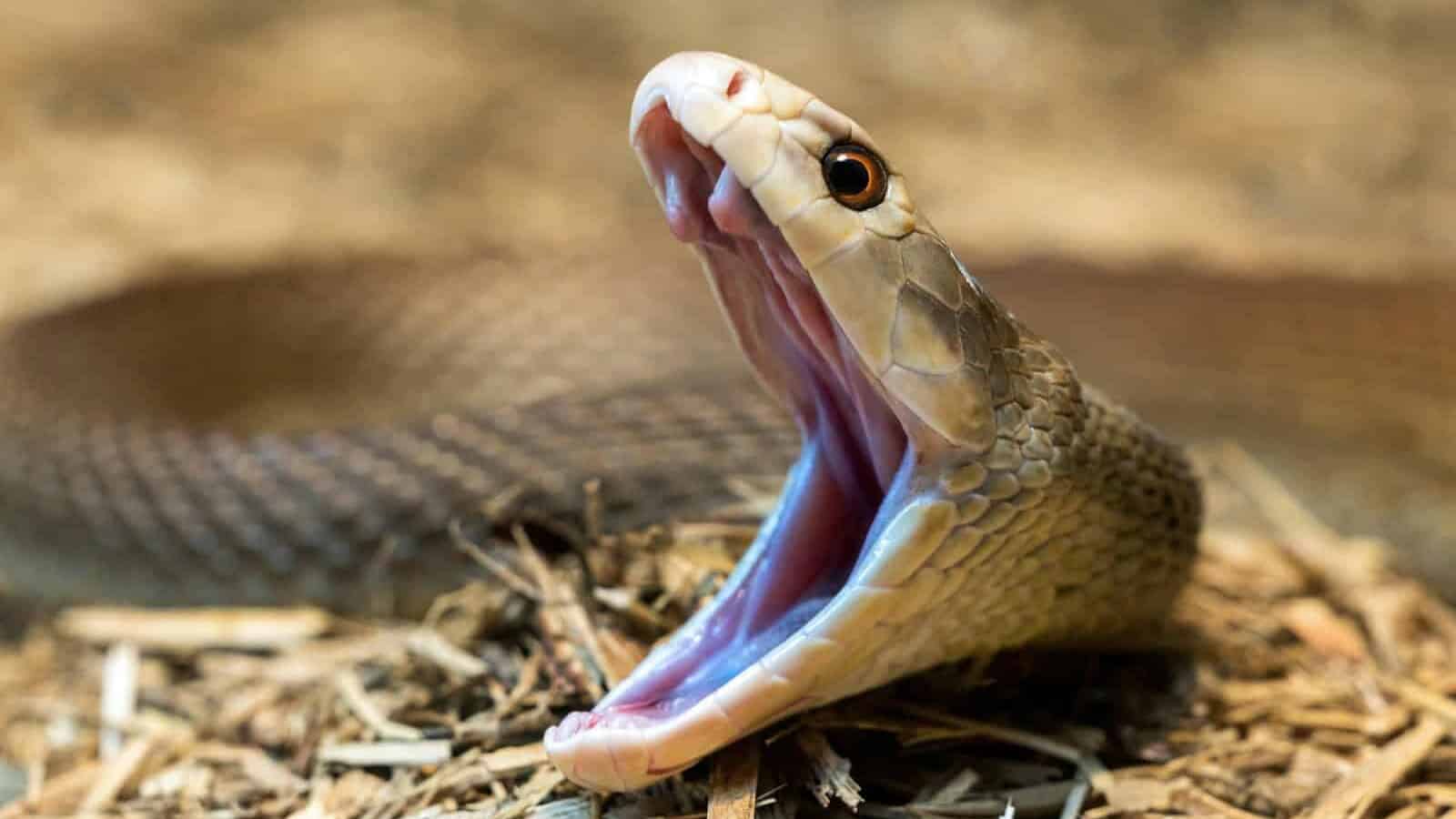
Many newly acquired snakes, especially wild-caught specimens, display defensive behaviors like striking, tail rattling, or musking (releasing a foul-smelling substance from their cloaca). Systematic desensitization can help overcome these reactions. This training technique involves gradually exposing the snake to the trigger stimulus (usually human presence or handling) at a low intensity that doesn’t provoke a defensive response, then slowly increasing exposure as the snake becomes comfortable.
Brian Barczyk, founder of The Reptarium and veteran snake breeder with decades of experience, shares: “I’ve worked with thousands of defensive snakes, and patience is the key. Sometimes it takes weeks or months of daily sessions just getting them comfortable with your presence before attempting handling.” The process requires careful observation of the snake’s stress thresholds. Success stories abound of formerly defensive snakes becoming completely docile through consistent, patient work. One study documented that 86% of defensive captive-bred ball pythons showed significant reduction in defensive behaviors after just eight weeks of systematic desensitization.
Environmental Enrichment and Problem-Solving
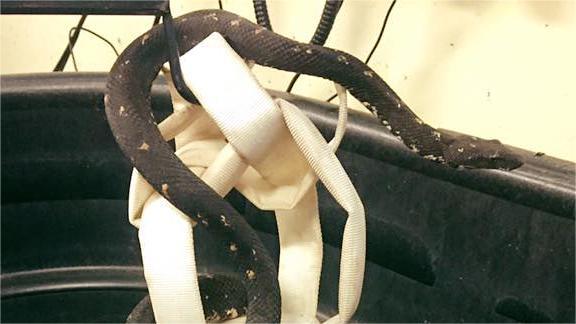
Recent research suggests that environmental enrichment can enhance a snake’s cognitive abilities and trainability. Complex enclosures with multiple hiding spots, climbing opportunities, and varied textures stimulate natural behaviors and problem-solving skills. Some advanced keepers create puzzle feeders or multi-level habitats that encourage exploration and learning. These environmental challenges help maintain mental stimulation and can make snakes more responsive to other training efforts.
Dr. Gordon Burghardt, pioneer in reptile cognition research at the University of Tennessee, explains: “We’ve observed snakes in enriched environments demonstrating greater behavioral flexibility and reduced stress responses compared to those kept in barren conditions.” His studies show that snakes raised with environmental complexity demonstrate measurably enhanced spatial learning abilities. This research suggests that the traditional minimalist approach to snake keeping may actually hinder their cognitive development and training potential. Many successful trainers now incorporate regular environmental changes and novel objects into their snakes’ habitats as part of their overall training program.
Recognizing the Limits of Snake Training
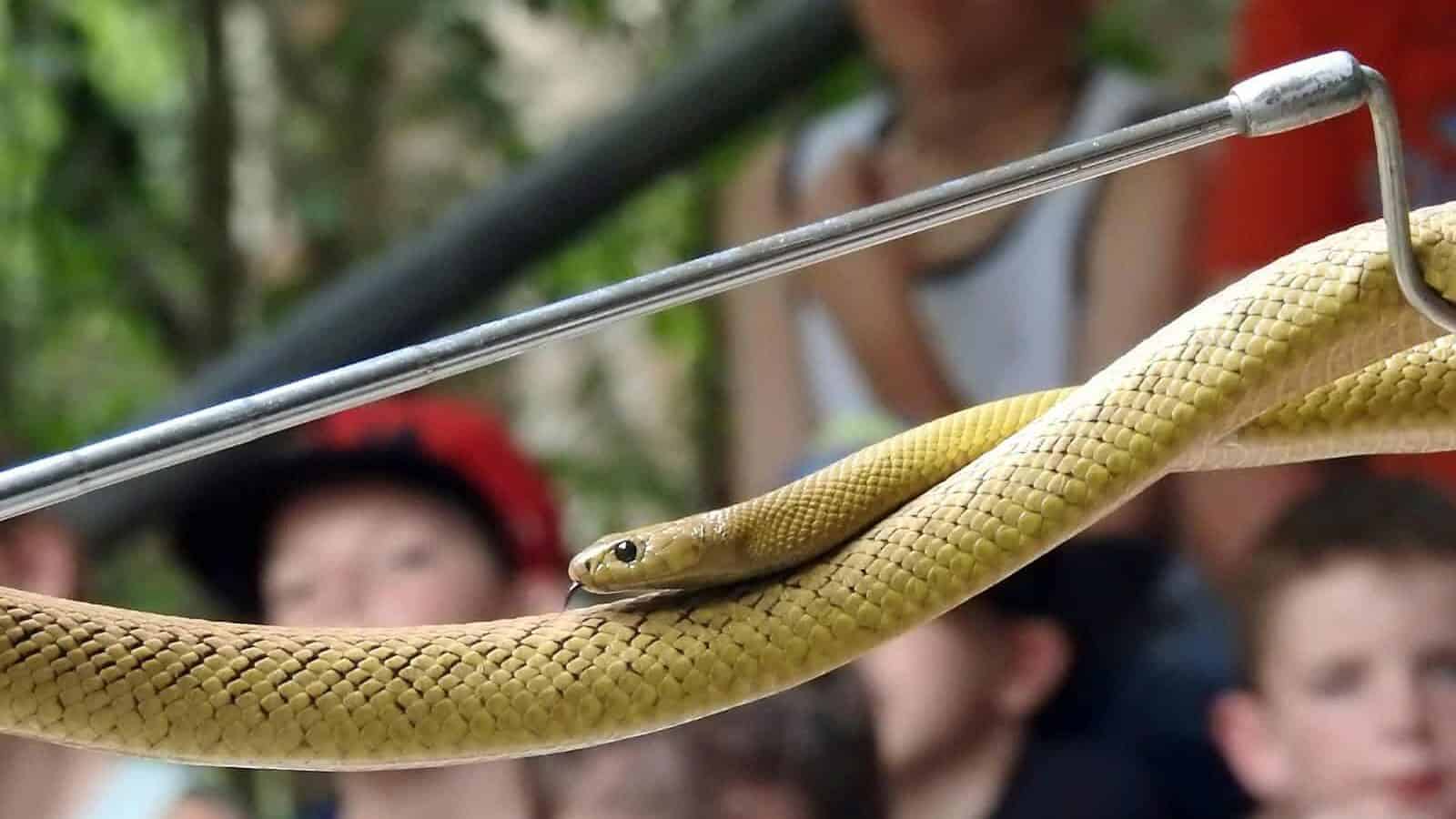
Despite successful training examples, it’s crucial to acknowledge the biological limitations of snakes as training subjects. Unlike mammals, snakes lack the neural architecture for complex social learning and don’t form attachment bonds in the way dogs or cats do. They don’t respond to verbal praise or seek social approval, which limits the reinforcement tools available to trainers. Additionally, their relatively slow metabolisms mean training progress often occurs over months rather than days or weeks.
Reptile veterinarian Dr. Susan Horton cautions: “We need realistic expectations about what constitutes success when training reptiles. A snake that tolerates handling without stress signs and feeds regularly in captivity should be considered well-adjusted, even if it doesn’t perform behaviors on cue.” Understanding these limitations helps prevent frustration and encourages training approaches that work with snake biology rather than against it. The most successful snake trainers recognize and respect these boundaries while still achieving meaningful behavioral modifications within those constraints.
Ethical Considerations in Snake Training
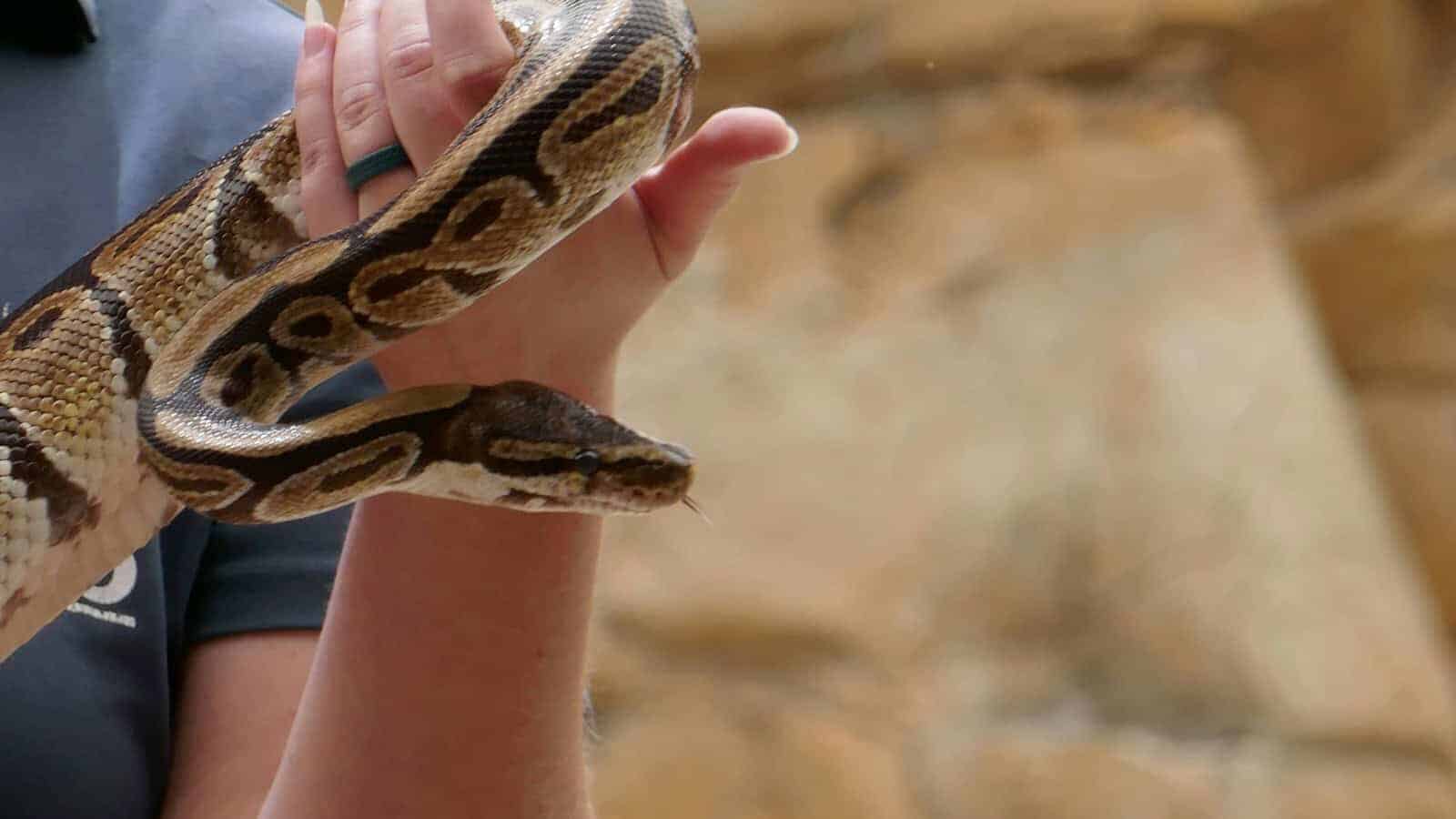
The ethics of snake training deserve careful consideration. Any training methods must prioritize the snake’s physical and psychological welfare. Aversive techniques like forced handling or punishment not only fail to produce lasting positive behavioral changes but can create chronic stress that compromises health. The Reptile and Amphibian Enrichment and Training Society emphasizes that all training should be based on positive reinforcement and respect for natural behaviors.
Dr. Candace Dorsey, animal behavior consultant specializing in exotic species, adds: “The most ethical approach asks not ‘what can I make this snake do?’ but rather ‘how can I help this snake feel secure enough to interact with me voluntarily?'” This perspective shifts the focus from control to cooperation. Some leading zoos and educational facilities now implement training protocols that allow snakes to “opt in” to handling sessions by giving them the choice to retreat if desired. This consent-based approach represents the cutting edge of ethical snake training and has shown promising results in reducing stress markers in regularly handled educational animals.
Scientific Research on Snake Learning

The scientific understanding of snake cognition continues to evolve through formal research. Studies conducted at the School of Biological Sciences at the University of Bristol have demonstrated that corn snakes can learn to associate specific visual cues with food rewards and retain this learning for weeks without reinforcement. Other research has explored snakes’ abilities to form spatial memories, recognize individual humans, and solve simple problems to access resources.
A groundbreaking 2021 study published in the journal Behavioural Processes documented that ball pythons could be trained using operant conditioning techniques to press a target for food rewards, challenging long-held assumptions about reptile learning capabilities. Lead researcher Tara Farrell noted: “We found that snakes not only learned the target behavior but showed evidence of anticipatory responses before the target was even presented, suggesting they were forming complex associations.” These scientific advances provide valuable insights for pet owners attempting to train their snakes, offering evidence-based approaches that align with the animals’ natural learning abilities.
Practical Training Tips for Snake Owners
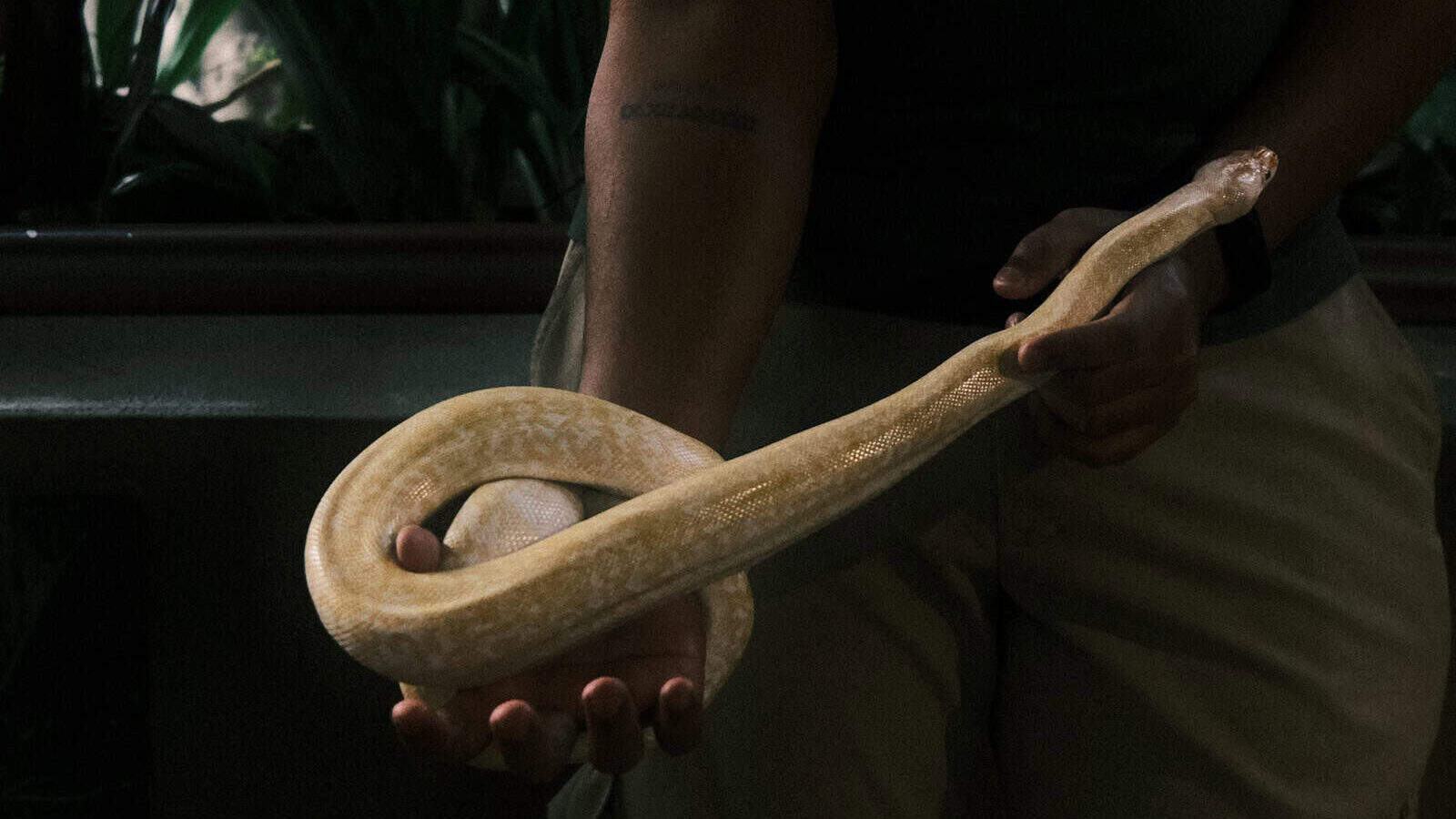
For snake owners looking to begin training, experts recommend starting with these fundamental practices: establish a consistent handling routine beginning with very short sessions; always wash hands before handling to remove food scents; move slowly and deliberately around the snake; provide appropriate hiding spots in the enclosure to create security; maintain optimal environmental conditions to reduce stress; and never attempt handling during shedding or within 48 hours after feeding.
Advanced training can incorporate scent training (using a specific non-food scent during handling sessions to differentiate from feeding times), target training using specialized tools, and gradual exposure to new environments to build confidence. Professional herpetoculturist Josh Marki advises: “Document your snake’s progress with notes or videos to track improvement over time. Snake training happens gradually, and changes can be subtle.” He also emphasizes the importance of consistency: “Training sessions should occur at similar times of day when your snake is naturally active, creating predictable routines that help the snake feel secure.” With patience and consistent application of these techniques, most snake owners can achieve significant improvements in their pet’s handling tolerance and overall behavior.
So, can you train a pet snake? The answer is a qualified yes—though training success depends on understanding what’s realistic for these unique animals. Snakes can indeed learn through habituation and conditioning, developing predictable responses to specific stimuli and becoming comfortable with regular handling. The most successful snake training focuses on working with their natural behaviors rather than attempting to override them, resulting in calmer, less stressed animals that interact more positively with their keepers.
While snakes will never perform tricks like a dog or form the same kind of bonds as mammals, the behavioral changes possible through patient, consistent training can significantly enhance the relationship between snake and keeper. Experts agree that reasonable training goals include habituating to handling, recognizing feeding cues, reduced defensive responses, and voluntary interaction—all achievable with most commonly kept species. Whether you’re a new snake owner or considering bringing one into your home, understanding these training principles will help you build a positive, enriching relationship with your serpentine companion.
- Can You Train a Pet Snake? Here’s What Experts Say - August 14, 2025
- Why Some Forests in the US Are Covered in a Mysterious Blue Glow - August 14, 2025
- The Hidden Cost of America’s Lawns: Water Waste in the Millions - August 14, 2025

